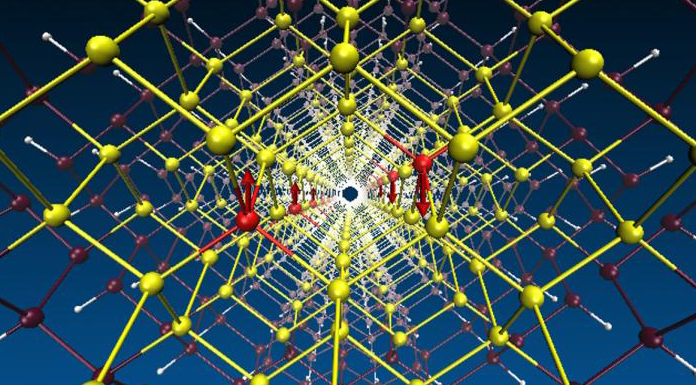A new nanowire design by physicists at Michigan Technological University simultaneously improves the capacity and minimises the physical size of digital data storage technologies.
In a study published in Nano Letters, scientists from Michigan Technological University explore alternative materials to improve capacity and shrink the size of digital data storage technologies. Ranjit Pati, professor of physics in Michigan, led the study and explains the physics behind his team’s new nanowire design.
Pati said: “Thanks to a property called spin, electrons behave like tiny magnets. Similar to how a bar magnet’s magnetisation is dipolar, pointing from south to north, the electrons in a material have magnetic dipole moment vectors that describe the material’s magnetisation.”
Depending on the direction of magnetisation (whether pointing up or down), data are recorded as bits (either a 1 or 0) in ferromagnetic domains. However, there are two bottlenecks, and both hinge on proximity. First, bring an external magnet too close, and its magnetic field could alter the direction of magnetic moments in the domain and damage the storage device. Secondly, the domains each have a magnetic field of their own, so they cannot be too close to each other either. The challenge with smaller, more flexible, more versatile electronics is that they demand devices that make it harder to keep ferromagnetic domains safely apart.
To solve this issue, Pati’s team used a predictive quantum many-body theory that considers electron-electron interactions. The team found that chromium-doped nanowires with a germanium core and silicon shell can be an antiferromagnetic semiconductor.
Pati explained: “In our recent work, we have successfully harnessed the intriguing features of an antiferromagnet into a low-dimensional, complementary metal-oxide compatible semiconductor (CMOS) nanowire without destroying the semiconducting property of the nanowire. This opens up possibilities for smaller and smarter electronics with higher capacity data storage and manipulation.”
Pati adds that the most exciting part of the research for his team was uncovering the mechanism that dictates antiferromagnetism. The mechanism is called superexchange and it controls the spin of electrons and the antiparallel alignment that makes them antiferromagnetic. In the team’s nanowire, germanium electrons act as a messenger between unconnected chromium atoms.









